The Common Core State Standards for Mathematics outline essential practices for developing mathematical proficiency among students at all levels. These practices encompass problem-solving, abstract reasoning, argument construction, mathematical modeling, strategic tool usage, precision, structure recognition, and recognizing regularity in reasoning. They emphasize the importance of understanding mathematical concepts, operations, and relationships as foundational to successfully engaging with mathematics.

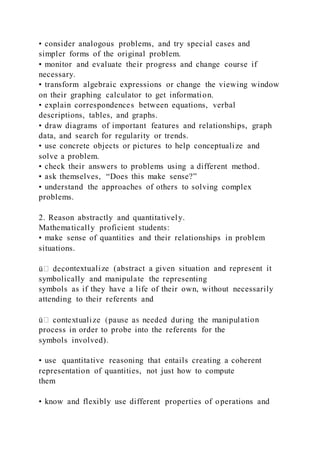
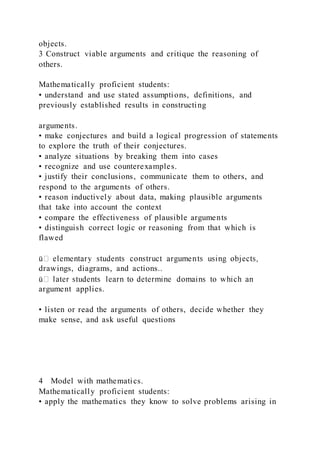


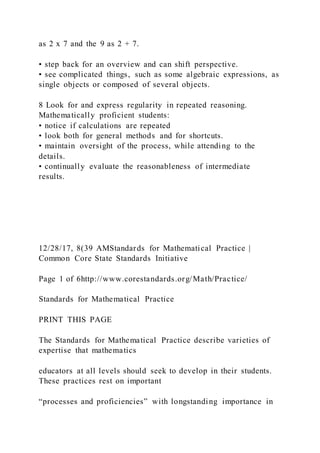



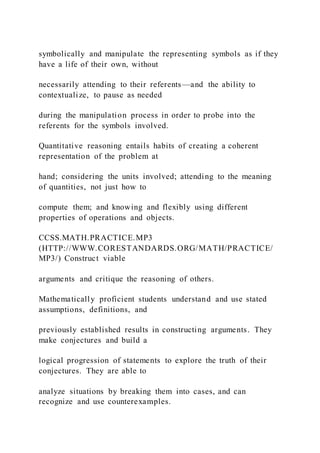






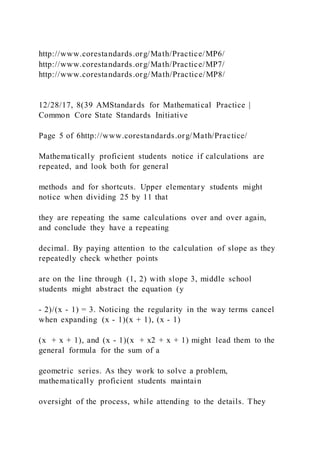

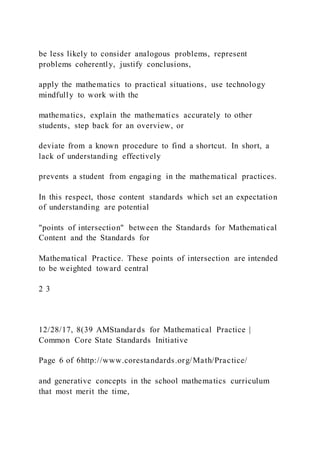




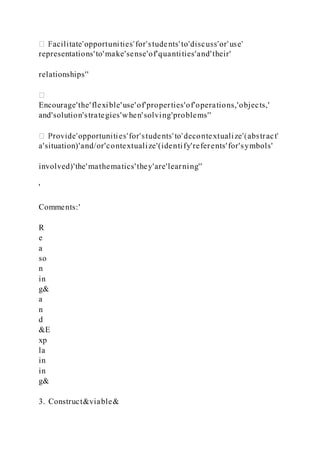
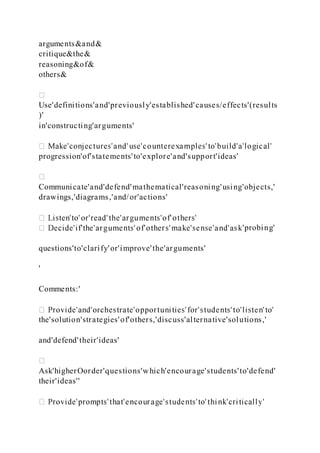
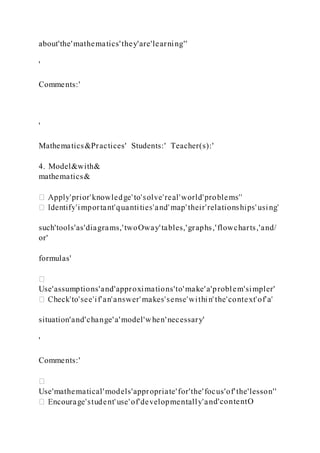






![b. What could a teacher do within a lesson to encourage
students in this
practice while engaging with this practice? (10pts) [Consider
mathematical knowledge for teaching]
3. What mathematical content knowledge required for this task
as a teacher?
(10 pts)
4. What does students need to know as a prior knowledge to
engage in this
task? (10 pts)
5. What do you hope for your students to learn mathematically
as a result of
engaging this task? (10 pts) [Think about mathematical
concepts, ideas,
representations etc.]
My answer to first part:
First, this is a common issue that happens in my daily life.
Second, the mathematical
strategy I am going to analyze this problem is called equal
probability. However, there
is some other information that needs to be clarified. Such as,
does these two lines have
equally efficient servers? And how long does it take each
customer to pay and leave?
In this question, Server efficiency and customer efficiencies are
the main factors or the
key to analyzing this problem.
If the servers and customers are equally efficient, the critical](https://image.slidesharecdn.com/commoncorestatestandardsformathematicsstandardsfor-220928124944-b4e81291/85/COMMON-CORE-STATE-STANDARDS-FOR-MATHEMATICS-Standards-for-33-320.jpg)

